A push movement is a great way to engage most of the important muscles around our chest and shoulders, and when the elbow extends it uses the triceps too. Pushing movements are used in every-day life when moving furniture, pushing open a heavy door or window, pushing a stroller or shopping trolley, throwing a ball, pushing up on a surf board or simply getting up off the floor.
Instead of trying to push a heavy weight up in the air, while you lie on a bench or sit on a machine, a push up is a much more functional exercise because it incorporates the core muscles – requiring the body to be stabilised in a straight line from head to feet, and replicates real life movement much more closely.
The perfect push up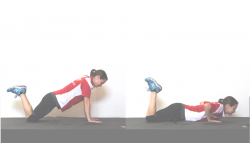
- Pushups can be made easier by either dropping to your knees, or placing your body on an incline with your hands up on a step, a bench or even the wall. Find the right position for you to enable you to perform the movement correctly. Better to do a correct, easy push up, than an incorrect, harder push up!
- One you have found your level, place your hands just wider than shoulder width apart – but directly underneath the line of your shoulders (not above or below your shoulders)
- Keep your body nice and straight from toes (or knees) to shoulders like a plank.
- Slowly lower your body down, leading with the chest – not the face or belly.
- Stop when your chest is a few cms from the floor – try not to collapse all the way onto the floor.
- Pause for a second at the bottom, then slowly push back up to starting position.
Common Mistakes
Bum up in the airWe want our body to be a nice flat plank from the knees (or toes depending on your level) up to the head. Having your bum up in the air usually means you are lacking the core strength to keep the abdominal muscles engaged and hold your torso in a plank position. If you are unable to hold a proper body position on the floor, you can try an incline on a bench or step, or even a wall to reduce the intensity. |
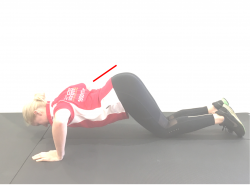 |
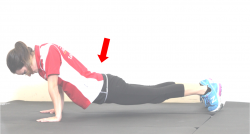 |
Hips saggingThis usually happens if you have the tight hip flexors and lower back muscles from an anterior pelvic tilt, and your abdominals and glutes are not strong enough to hold your pelvis in a flat plank position. Sagging hips is when the pelvis drops down, and the hips hit the floor before the chest, limiting range of motion and failing to engage the proper core muscles |
Doing the wormThe ‘worm’ can be due to lack of core strength or upper body strength – or both. It is seen when the body is lowered all the way down to the floor but instead of keeping the body in a flat plank, the upper body comes up first, followed by the hips in a worm like movement. |
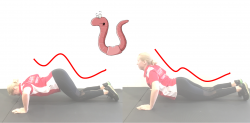 |
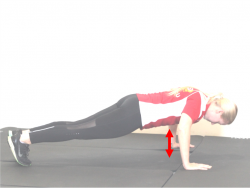 |
Too ShallowA lot of people will stop half way to the floor and miss out on the full range of motion available in the shoulder girdle. This limits the lengthening or stretching phase of movement and places extra emphasis on the shortening or tightening phase. It also does not allow training to occur in the most challenging phase of the movement, which is the one most crucial for movement like popping up on a surfboard, or getting up off the floor. A full push up should result in the chest almost touching the floor or bench before returning to the top. |
Too fastIt’s not a race guys! Most exercises designed for general strength and endurance give you better results if you move more slowly, keeping the muscles under tensions for the whole time – it’s only if you’re training for explosive, power movements that speed should be involved. At the bottom of the range of movement, you should pause briefly before slowly pushing back up to the starting point. Don’t use bouncing movements or momentum – you’re just cheating yourself! |
 |
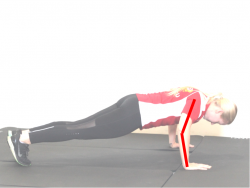 |
Not getting full extensionThis often happens when someone is trying to push out as many reps as possible in a short time, and to speed up the process, the elbows don’t fully extend, limiting the range of motion, and making the reps smaller and quicker. Again – you’re only cheating yourself! Focus on a good quality, full range of motion. |
Arms too far in front or behindYour hands should be slightly wider than your shoulders, at the level of your nipple line. At the bottom of the pushup your chest should touch the floor right between your hands. If your hands are too far in front you will place too much emphasis and stress on the front of the shoulder (instead of the chest), if your hands are too far behind you will not be able to achieve adequate range of motion, and will place emphasis on your triceps instead of chest. |
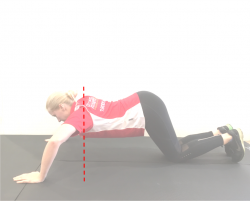 |
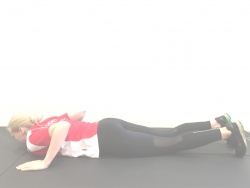 |
Resting on the floorIf you are coming all the way down to the floor and letting your body weight rest with every rep, you are not keeping your muscles engaged throughout the whole range of movement. Try to pause just a few cms above the floor to maximise muscle activation. |
